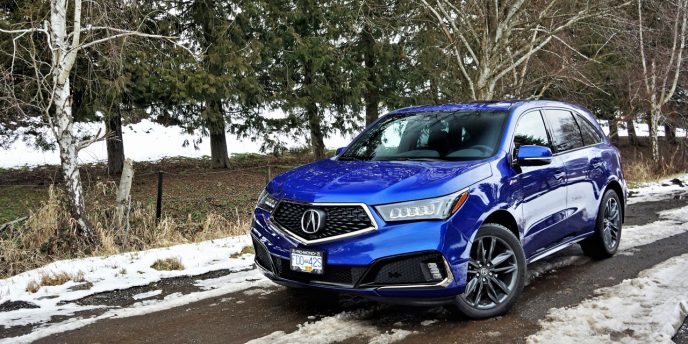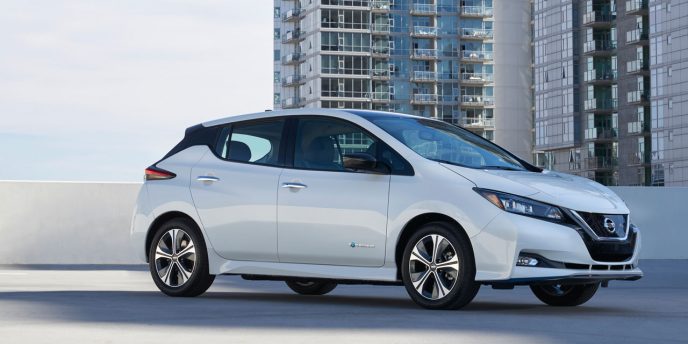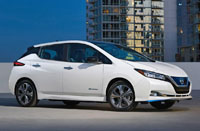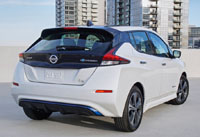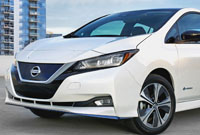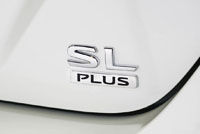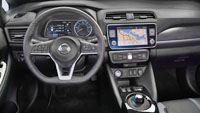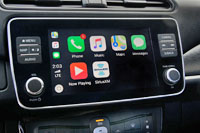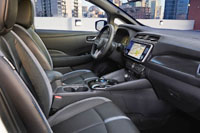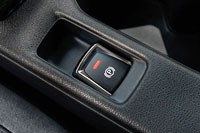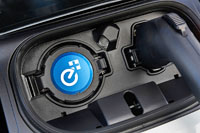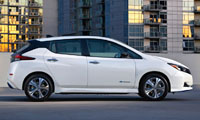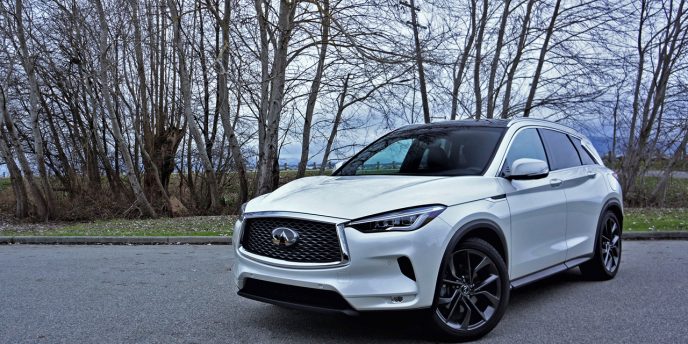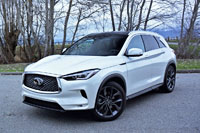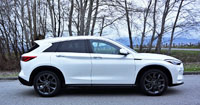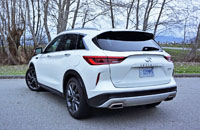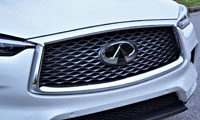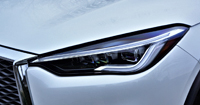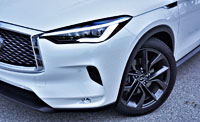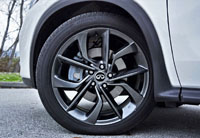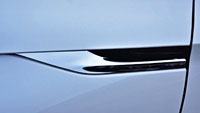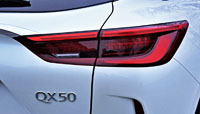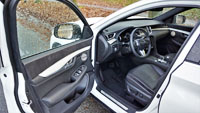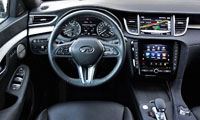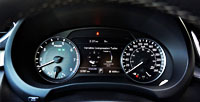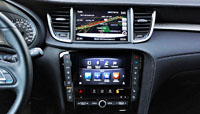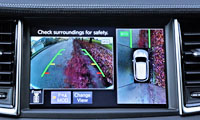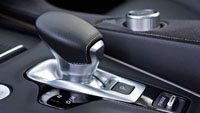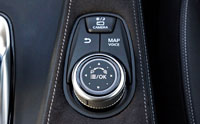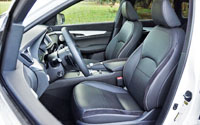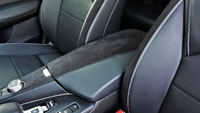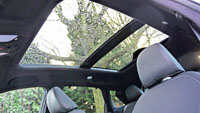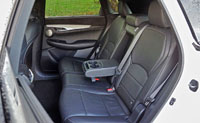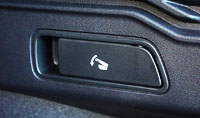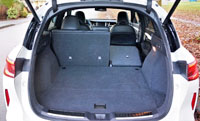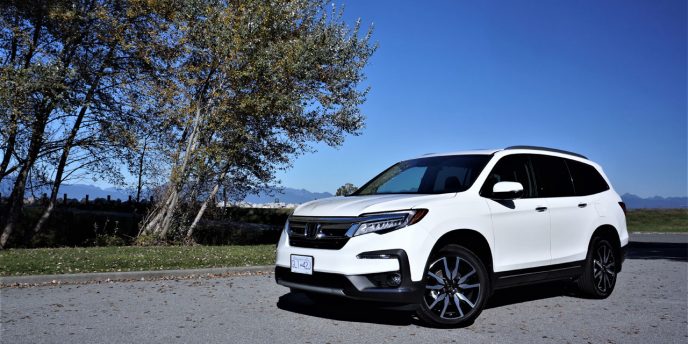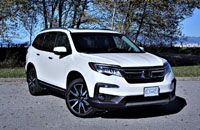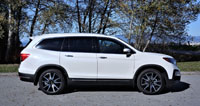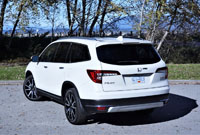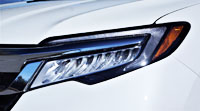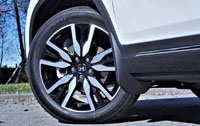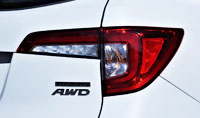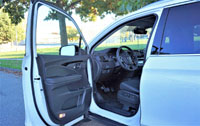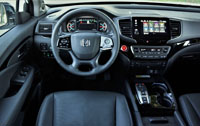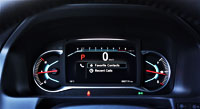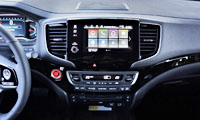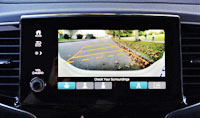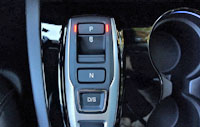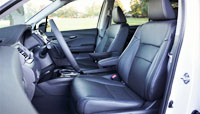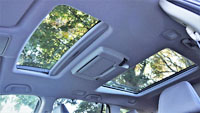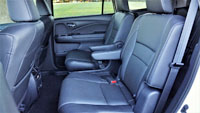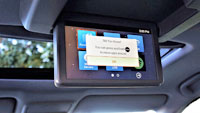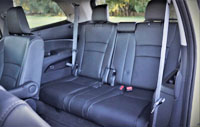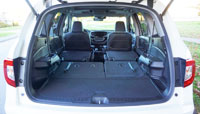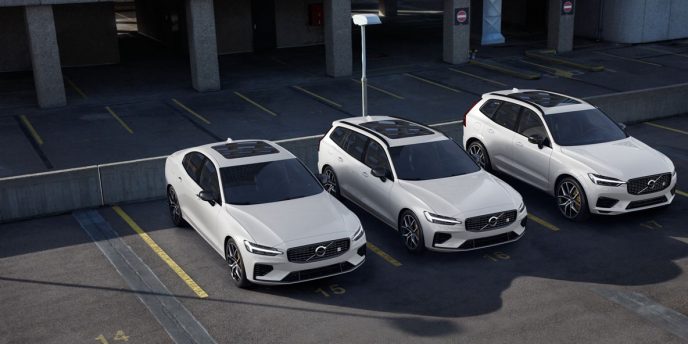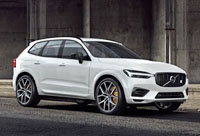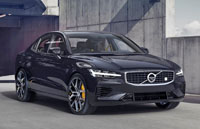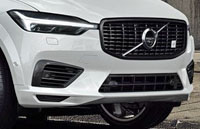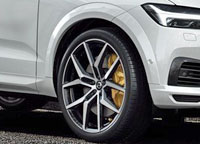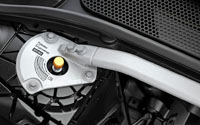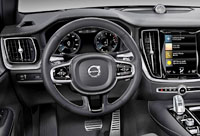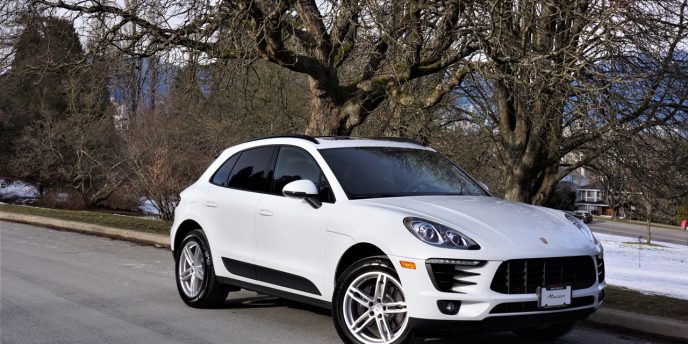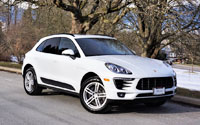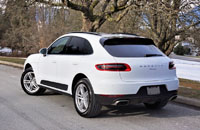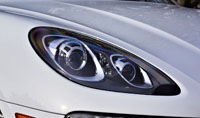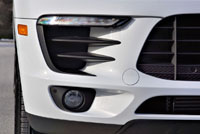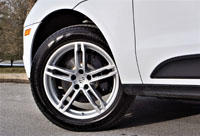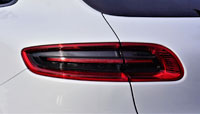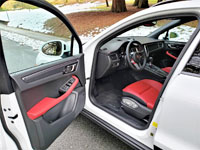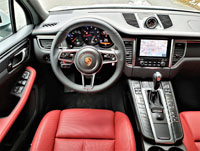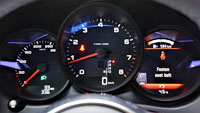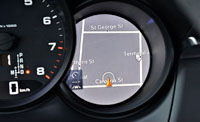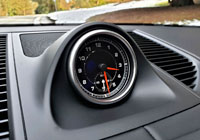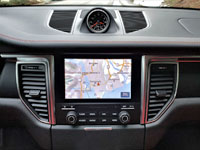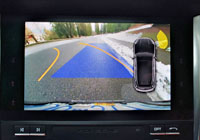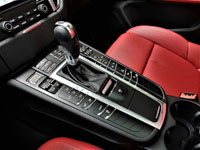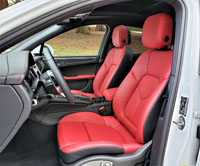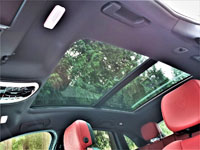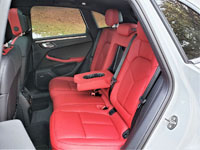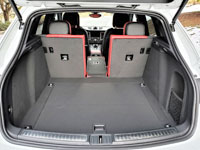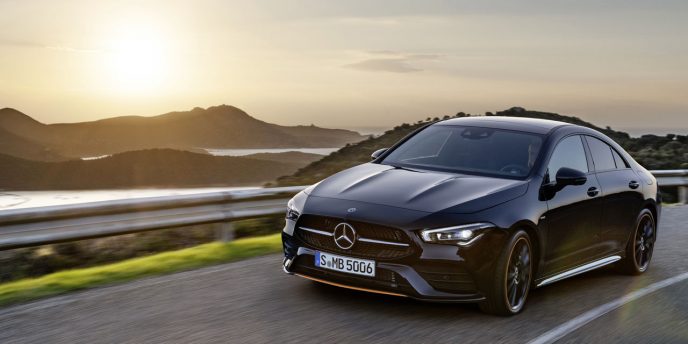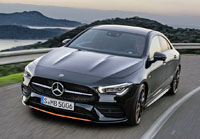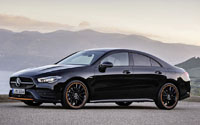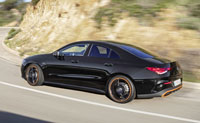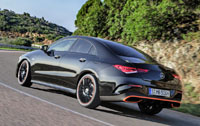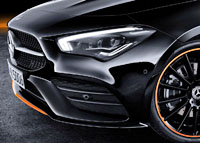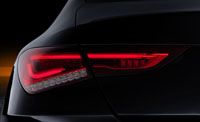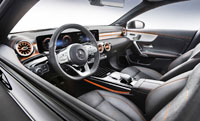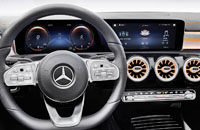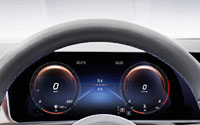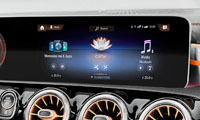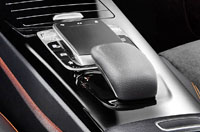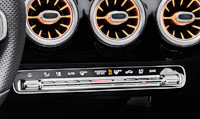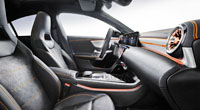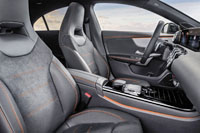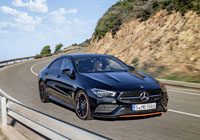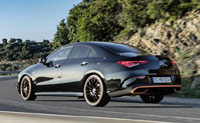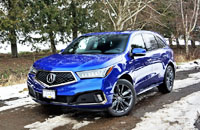
The fact that you’re reading this means you’re probably fully aware what an Acura MDX is, but it’s quite possible you’ve never heard of A-Spec. Don’t worry, because you’re far from alone. Basically, A-Spec is a performance trim offered across the entire Acura lineup that, depending on the model in question, may or may not include any actual go-fast sport-oriented upgrades. As for the MDX A-Spec, which is new for this 2019 model year, it’s purely a styling exercise.
Fortunately the new A-Spec enhancements result in a very attractive bit of SUV kit, including gloss-black and darkened chrome trimmings for the grille, headlamps, window surrounds, and rear rooftop spoiler, plus a more aggressive frontal apron, painted front and rear lower skid plates, body-colour door handles, body-coloured rocker panels, bigger exhaust pipes, and a gorgeous set of 20-inch 10-spoke Shark Grey alloys on lower profile 265/45 all-seasons. That rubber might seem like the only upgrade that could possibly improve the MDX’ performance, but it should be noted these are the same as used on this SUV’s most luxuriously adorned Elite model.
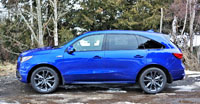
Sliding into any one of the MDX seven seats means that you’ll inevitably have to pass over one of four A-Spec-embossed metal treadplates, while the upgraded cabin also features a unique primary gauge package that’s been brightened with additional red highlights. The latter gets framed by a thicker A-Spec-branded sport steering wheel that’s partially wrapped in grippy dimpled leather, while just below are sporty metal foot pedals. The console between the driver and front passenger gets special carbon-look detailing, and the sport seats flanking it are either covered in a sensational “Rich Red” upholstery or, in the case of my test model, special black leather with high-contrast stitching, plus plush perforated black suede-like Alcantara inserts.
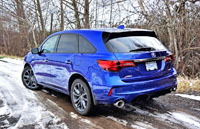
So what do you think? I, for one, like what Acura has done to spiff up this aging yet still worthy luxury SUV. The exterior changes add some fresh new life to what is still a good looking package, while the interior mods are as easy on the eyes as they’re tactilely pleasurable (especially the Alcantara), but let’s be clear, none of this does much to modernize an instrument panel layout that has slowly been freefalling into the realms of classic, retrospective designs.
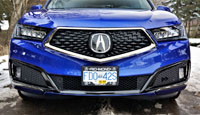
Of course, I’m not talking about the MDX’ downright radical, left-field, but now that I’m used to it, perfectly functional and kind-of-cool lower console-mounted pushbutton gear selector, which should never be exchanged for RDX version that takes up much too much valuable space on its centre stack, or for that matter the entry-level crossover’s new rotating drive mode selector that’s equally inefficient in its size and placement and therefore forced the need to position the otherwise superb tablet-style infotainment display atop the dash instead of closer to the driver where it could otherwise be actuated via touch gestures for easier use, instead of a complex touchpad that should only be an extra add-on to complement the overall infotainment package, we all have to admit the MDX two-tiered display setup is pretty outdated.
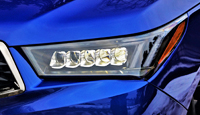
Why two centre tiers? Unlike the new RDX, that fits a fairly large multi-information display (MID) between two analogue dials within the primary package (although a fully digital cluster would be more competitive in top trims), the MDX gets a tall, narrow MID with simple colour graphics and minimal info ahead of the driver, and sends other MID info to the larger 8.0-inch top monitor on the centre stack. You can access the usual info from a rotating/push dial just under the second display below, while the top screen defaults to the navigation map when not in reverse, at which point an excellent multi-angle backup camera with active guidelines comes into play; the available 360-degree surround parking monitor can only be had with the previously noted top-line Elite model. This leaves more easily reached 7.0-inch touchscreen for audio and climate control adjustment, etcetera.
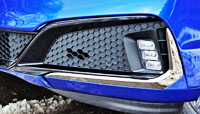
Before I start getting hate mail for beating up on the MDX’ obviously aging infotainment system, a problem that many other brands are dealing with as their various models attempt to stay fresh and intriguing while undergoing the same old two- to three-year refresh, and four- to five-year redesigned cycles as have been used for decades, some of Acura’s competitors have done a better job of staying ahead of the digital curve and are therefore reaping the rewards of doing so.
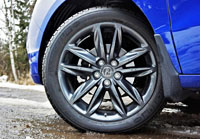
We’ll have to wait and see what Acura brings to the table, or more specifically the instrument panel when the all-new redesigned MDX surfaces sometime before 2020 or 2021 (so far there has been no official launch announcement), but as you can tell from my RDX comments (which is otherwise one of the best crossover SUVs in its compact luxury class), I’d rather Acura choose a different infotainment direction for the next-gen MDX.
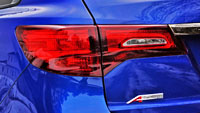
All grumbling aside, the current MDX infotainment system works well enough, and even includes such advanced features as Apple CarPlay and Android Auto, Bluetooth phone connectivity with audio streaming, Siri Eyes Free, SMS text message and email reading functionality, satellite radio, four USB charge-capable ports, and more, plus as noted my A-Spec tester also had an accurate navigation system with detailed mapping and voice recognition, this pulled up from the MDX’ mid-range Tech trim line, which also provided superb 10-speaker ELS Studio surround sound audio, hard disk drive (HDD) media storage, AcuraLink subscription services, and more.
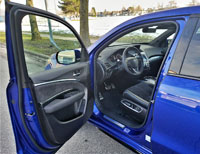
As usual with any Acura model, I feel tempted to list out as many features as possible, because this helps you to appreciate just how good the brand’s value proposition is, but this time around I’ll try to keep my babbling to a minimum and just detail the more important highlights such as LED fog lamps, auto-dimming power-folding outside mirrors, perimeter/approach puddle lamps, keyless entry buttons for the rear doors, and cooled/ventilated front seats as additions to the $60,490 A-Spec features menu, while additional items sourced from the Tech model include sun position detection for the climate control, front and rear parking sonar, and Blind Spot Information (BSI) with rear cross-traffic alert. s
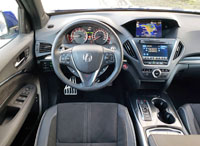
Advanced driver assistance systems in mind, each and every MDX trim comes standard with the Japanese luxury brand’s AcuraWatch suite of safety and convenience features, including Forward Collision Warning (FCW), Collision Mitigation Braking System (CMBS), Lane Departure Warning (LDW), Lane Keeping Assist (LKAS), Road Departure Mitigation (RDM), and Adaptive Cruise Control (ACC) with low-speed follow.

Finally, some key features sourced from the $54,390 base MDX for my tester’s A-Spec trim include the brand’s signature Jewel Eye LED headlamps with automatic high beams, attractive LED tail lamps, sound-deadening acoustic front glass, a remote engine starter, proximity-sensing front access, pushbutton start/stop, ambient cabin lighting, memory for the standard power-adjustable steering column, side mirrors, and auto climate control system, an electric parking brake, a power-operated glass sunroof with shade, a HomeLink universal garage door opener, an auto-dimming centre mirror, driver recognition, a heatable steering wheel rim, transmission paddle shifters, rain-sensing wipers, tri-zone front and rear auto HVAC, Active Noise Control (ANC), Active Sound Control (ASC), heatable 12-way power-adjustable front seats with four-way powered lumbar, a power liftgate, a 1,588-kilo towing capacity (or 2,268 kilograms with the available towing package), plus more.
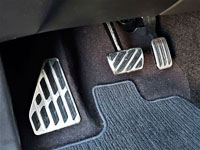
Of note, all of the 2019 Acura MDX trim, package, and options pricing shown in this review were sourced from CarCostCanada, where you can also find helpful rebate information as well as dealer invoice pricing that could save you thousands, so make sure to check click here to save the most money possible when purchasing your next car, truck or SUV.
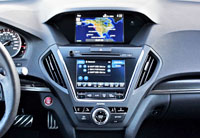
So far in this review, I’ve criticized the MDX for some of its mostly digital shortcomings, but I have to admit that it’s still enjoyable to drive and very comfortable, no matter where you’re seated. It’s also finished quite well considering its age, particularly in A-Spec trim. Some of this model’s interior upgrades include the aforementioned sport steering wheel, which feels really good in the fingers thanks to a thick, meaty, textured leather rim and well-sculpted spats for each thumb, while the interior is also filled with an attractive combination of satin-silver aluminum trim accents and other premium-finish inlays. Additionally, Acura lays on a heavy dose of premium-quality pliable composites across the dash, each door upper, and most everywhere else including the glove box lid, with just a small section of the instrument panel below the driver’s knees, plus each side of the lower centre console, and the bottom portion of each door panel, finished in harder, less premium types of plastic. Just above, however, are some of the plushest Alcantara door inserts in the business, this exclusive to my A-Spec model.
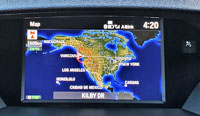
I was happy to be reminded that the MDX’ driver’s seat includes the four-way powered lumbar mentioned earlier, helping to add just the right amount of pressure in just the right spot for reducing back pain, and only wish all automakers would do likewise, while the comfortable driver’s seat also provided plenty of the usual adjustments this category offers, yet I would have also liked the under-leg support provided by a lower cushion extension, and being that this model is Acura’s sportiest large SUV, a set of adjustable side torso bolsters would be handy too. Unfortunately, even the front seats in A-Spec trim don’t keep one’s backside in place very firmly when tackling corners, but on the positive the side bolsters should provide comfort for those on the larger size.
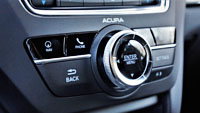
Not only comfortable, the MDX provides excellent visibility all around, making it easy to operate in all types of traffic situations, but before delving into its driving dynamics, I should mention how much room this SUV offers. Having set up the driver’s seat for my five-foot-eight, long-legged, short-torso frame I still had plenty of room when seated in the second row just behind. That second-row easily slides fore and aft to make more room if needed, but even with it pulled all the way forward I still had a couple of inches of air ahead of my knees and room enough for my feet while shod in winter boots, plus when that second-row seat was pushed all the way back it was downright limousine-like.
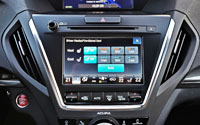
With the second-row all the way rearward, the MDX’ rearmost row is probably only good for smaller adults or children, but after sliding the middle row forward I had plenty of room and those just mentioned winter boots slotted nicely underneath. I can’t call the third row comfortable, but it should be adequate for kids and mid-size teens, which is makes the MDX more utile than many in this class. Those in the very back shouldn’t get claustrophobic either, thanks to a set of side windows and a decent view out the front, while cupholders and nice reading lamps provide a good atmosphere for long trips. Climbing out from the very back is fairly easy as well, only needing you to press a button on the back of the second-row seat that immediately slides it forward, but this said it’s not the largest throughway to enter or exit from, so take care if you’re past teenage years.
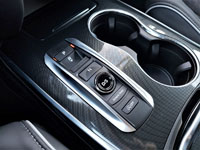
Back in second row, a handy climate control panel is added to the backside of the front centre console for rear passenger comfort, while Acura also provides two USB device chargers below. I would’ve liked to see a set of second-row seat heaters, but these only come in top-tier Elite trim; c’est la vie.
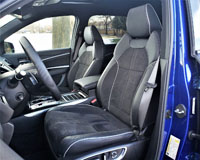
The powered rear liftgate opens to a properly finished cargo area featuring chrome tie-down hooks and nice, high-end carpeting up the sidewalls and on the seatbacks, while a sharp looking aluminum tread plate pretties up the rear doorsill. It’s adequately roomy too, with 447 litres (15.8 cubic feet) of gear-toting space behind the third row, and a useful underfloor compartment too. Folding the 50/50-split rear seats down is easy enough, but smaller folk might want Acura to add a power option in the upcoming redesign. Dropping the second row down is a manual affair as well, and while it’s easy enough you’ll need to walk around to the side doors to do so. Cargo capacity grows from 1,230 litres (43.4 cu ft) aft of the upright second-row seats to 2,575 litres (90.9 cu ft) when all are laid flat, but take heed that no middle pass-through is available for longer cargo such as skis, meaning the MDX’ European rivals do a more comprehensive job of providing passenger/cargo flexibility.
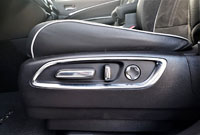
As for the MDX powertrain, it’s probably the most experienced in its segment, which is a bonus if you’re looking for well-proven reliability, or a bane if you want the latest under-hood technology. Acura’s SOHC 3.5-litre V6 has been around since 2014, and while producing a decent 290 horsepower and 267 lb-ft of torque when compared to mainstream volume branded SUVs, doesn’t exactly light a fire under your seat when getting hard on the throttle when compared to some key competitors, like Audi’s 333-horepower supercharged Q7 and BMW’s 335-hp turbocharged X5, plus plenty of others, and making this issue even more pronounced is the fact the older 2007 to 2013 second-gen MDX used a 200-cc larger 3.7-litre variation on the same V6 theme that was 10 horsepower and 3 lb-ft of torque stronger for max output of 300 hp and 270 lb-ft, which means the MDX has kind of been in reverse when it comes to straight-line performance.
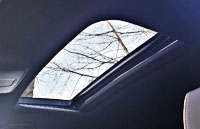
Softening the backhanded blow in 2013, when the current 2014 powertrain was introduced, was the nine-speed ZF automatic transmission still doing an admirable job of swapping cogs. While hardly producing lightning-quick shifts, even in Sport mode, it was certainly more fun to flick through the paddles than the previous six-speed unit, and I must say it’s wonderfully smooth about its business, while Acura’s torque-vectoring SH-AWD, standard with the MDX, even makes slippery road conditions confidence-inspiring.
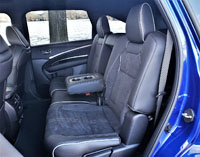
I took the MDX up a local mountain road and was thoroughly impressed by its ability through thick, mucky snow, the white fluffy stuff having departed long before I arrived. I can only imagine how well it would work if Acura had provided some winter tires instead, but the 265/ 45R20 Michelin Latitude Alpin all-seasons circling the dark grey alloys mentioned earlier, did a fine job just the same.
Likewise for the MDX’ capable suspension, which while set up with more focus on compliant comfort than edgy performance, is easily up to fast-paced cornering through circuitous backroads, but it’s even better at high-speed cruising down the freeway thanks to its superbly sorted fully independent suspension that tracks brilliantly while providing an excellent ride.
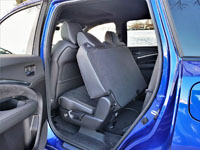
The Sport mode just mentioned comes as part of a drive mode selector that also offers Comfort and Normal settings, plus the ability to stay in a chosen mode even after shutting off the engine and returning later. So therefore, if you’re the type of driver that leaves their SUV in Sport mode all the time, Acura has you covered without any extra fuss, and likewise for those who place Comfort higher on their priority list.
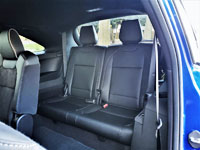
Now that I’m on to more practical subjects, the MDX’ fuel-efficiency is quite good for this class, despite its large V6 engine. This might be due to its relatively stress-free life compared to what a turbo-four would need to do if pushing such a large, weighty SUV, the as-tested MDX A-Spec hitting the scales at 1,945 kg (4,288 lbs). The engine also features some impressive technologies including direct-injection, i-VTEC, Variable Cylinder Management (VCM) that turns off one row of cylinders when not being pushed hard, auto idle stop/start that reduces consumption and emissions even more, and the nine-speed autobox that’s tweaked to minimize engine revs, all helping this A-Spec model to achieve a Transport Canada rating of 12.2 L/100km city, 9.5 highway and 11.0 combined, which is just a bit more than every other MDX trim that get rated at 12.2 city, 9.0 highway and 10.8 combined. Speaking of fuel economy, I just recently retested the MDX Sport Hybrid, which, due to an innovative two-motor hybrid-electric powertrain, is rated at 9.1 L/100km in the city, 9.0 on the highway and 9.0 combined. I’ll make sure to review this top-line MDX soon, so please come back for the rest of this SUV’s story.
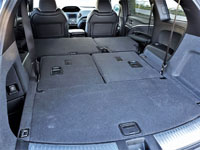
Back to the conventionally powered MDX, I must admit to still enjoying my time behind the wheel. It’s not the fastest, best handling or most advanced crossover SUV in the luxury sector, but quick and agile enough, and offers up an excellent ride with superb comfort all-round. It’s the type of SUV you can drive all day and never tire of, and that’s just the kind of luxury I like living with day in and day out. On top of this, 2019 A-Spec trim brings a sporty new look and other refinements to the well-proven MDX package, so I wouldn’t be surprised to see a number of these nicely outfitted models in better Canadian neighbourhoods this year.



